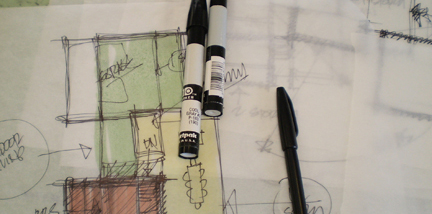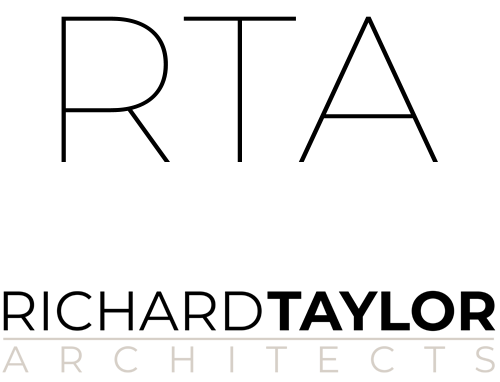
How do You Start a Home Design? 4 Strategies to Help Get Your New Home or Remodeling Project Started and Past the Dream Stage
How do you start designing a house? You’ve been trying to get your new home or remodeling past the dream stage for a long time now. You’ve looked at dozens – maybe hundreds – of house plans online.
You’ve built up a huge collection of photos on Houzz, or Pinterest, or both.
And yet somehow, you don’t feel any closer to your dream house. Maybe you even feel a little further away from it. You thought that by taking your time and collecting ideas and information you’d make progress, but instead, you’re stuck.
Getting stuck at the dream stage is a common problem that I hear about every week from people just like you – here are a few email snippets:
“…we’ve looked at around thirty home [designs] and still haven’t found anything that we like…”
“I have been looking for…house plans and they are mostly horrible!”
“I was able to find one house plan that was close, but needs quite a few modifications…”
“…last night on Houzz, as I was skimming through photos for the 100,000th time…”
“Most of the homes I have found on line etc., did not have interiors to my liking…”
“We have no idea what all this is going to involve as we have never tackled anything like this before.”
“My husband and I have been looking for what seems like forever…”
Do any of those sentiments sound familiar? I have dozens more examples, but you get the idea – they’re all wondering, “how do you start designing a house?”
All of these folks are dreaming about a new home, or dreaming about remodeling the home they’re in now. You want to get your new home or remodeling project past the dream stage and start the building and so do they.
You’re ready; so what’s the problem?
You’re probably suffering from something called “designer’s block”. I know, because I sometimes struggle with it, and that’s a bad thing for someone who gets paid to design. And although you’re technically not a designer, you are engaged in a creative process, and that makes you susceptible to this very frustrating malady.
Designer’s block is a real thing, just like writer’s block.
Writer’s block has been the subject of many scholarly studies including Mike Rose’s classic Writer’s Block: The Cognitive Definition. Most experts agree that it’s caused by a combination of too much information, and pressure to produce.
That kind of pressure can be intense, and it can create real fear; Ernest Hemingway once said his greatest fear was “a blank sheet of paper.” A writer suffering from writer’s block knows what to do, but just can’t seem to commit words to paper.
Whether you’re trying to find just the right house plan, or searching for just right inspiration for your home design project, you just can’t seem to stop the dream and start the reality.
I’ve learned to manage my occasional designer’s block with a few simple strategies that will also help you get past the “dream stage” of your home design project. Try these to break free and get back to working on your dream:
1. Make Progress – Any Progress
Your mind is telling you that you need to come up with just the right solution, and you’re hoping that all the information you’ve collected with lead you there.
It will – eventually. But for now you need to just make progress – any progress.
That’s strategy number one. Looking at designs on house plan websites? Pick one – any one that’s reasonably similar to what you like (flaws and all), and start working with it. You’re going to make changes, right? Then it probably doesn’t matter too much which plan you start with.
You just need to start working with something.
When I start a design project, my goal isn’t to imagine the right design and then draw it, it’s to start drawing and let the design flow from the process of drawing.
It sounds backwards, but it works.
Do This: Pick a house plan, good or bad, and start working with it. If you’re remodeling, sketch out your existing house plan, and start working with changes to that.
2. Narrow It Down
A client called me the day after our very first meeting. “I’ve put a few photos up on Houzz,” she said, “To give you some idea of what I’m thinking about for the house design.”
“A few” in this case meant four hundred and fifty photos.
We had a long talk about that. Four hundred and fifty photos are a little bit of everything, and that’s a recipe for designer’s block. I had her narrow down the photos to just the essential 150 and sort those into groups.
There were plenty of good ideas, and plenty of places to start the process, in those 150.
When you put too many photos or too many house plans in your collection you’re building a roadblock between yourself and progress on your design. It’s hard to know how to start designing a house when you have too many ideas, none of which are exactly what you want.
Do This: Narrow your choices down to just a handful of representative ideas, and make those your starting point. You’ll have plenty of opportunities to add more ideas later on, or to change your design to reflect something new.
3. Stop Trying to Avoid Being Wrong
In a 1994 episode of Seinfeld, George decides that every decision he’s ever made has been wrong, and that to succeed, he should do the exact opposite of his instincts. In an instant, George decides to stop fearing failure.
Fear of failure is the number one cause of writer’s and designer’s block. Yet ironically, making mistakes – lots of them – is an essential part of the creative process.
You’re afraid that if you don’t look at every possible house plan, you might choose the wrong one. You’re afraid if you don’t pin every photo that catches your eye on Pinterest, you might miss finding the perfect room design.
But good design ideas don’t only exist in photographs; they flow from the creative process of adapting the ideas in those photographs to your situation.
“Being creative” means accepting the risk of being wrong; it means that action is more important than accuracy, at least at the beginning of the process.
And you can’t take action if you’re always worried about that action being wrong.
Do This: give yourself permission to be wrong. Do the opposite – instead of searching for the perfect plan or photo, find something completely different and use that for inspiration.
4. Find the Theme
My wife marked a bunch of photos in some design magazines a few years ago for a bedroom remodel, ideas she liked but wasn’t sure what to do with.
We looked through them together and realized that they all had a hint of “western” design to them.
Hey honey, we’ve got a theme here.
A theme gives you a framework to design within; a theme makes all of your decisions much easier because new ideas either fit in the theme or they don’t.
And as my wife and I discovered, you don’t have to start with a theme; your theme might develop as you go along. Or maybe there’s already a theme in the photos you’ve collected, and you just need to find it.
Do This: find the theme in the photos or house plans you’ve collected – do they share a style? A color scheme? Are your favorite house plans simple forms, open floor plans, cottages? Find the theme and you’ll find a new perspective and renewed design energy.
Every design project starts with a dream, but at some point you’ve got to start making the dream real.
That doesn’t mean you should cut the “dream stage” short; just don’t get stuck in it when you should be creating.
If you find yourself stuck don’t panic –instead, take steps to get the creative process back on track. You’ll keep the ideas flowing, and you’ll likely end up with a better design.


